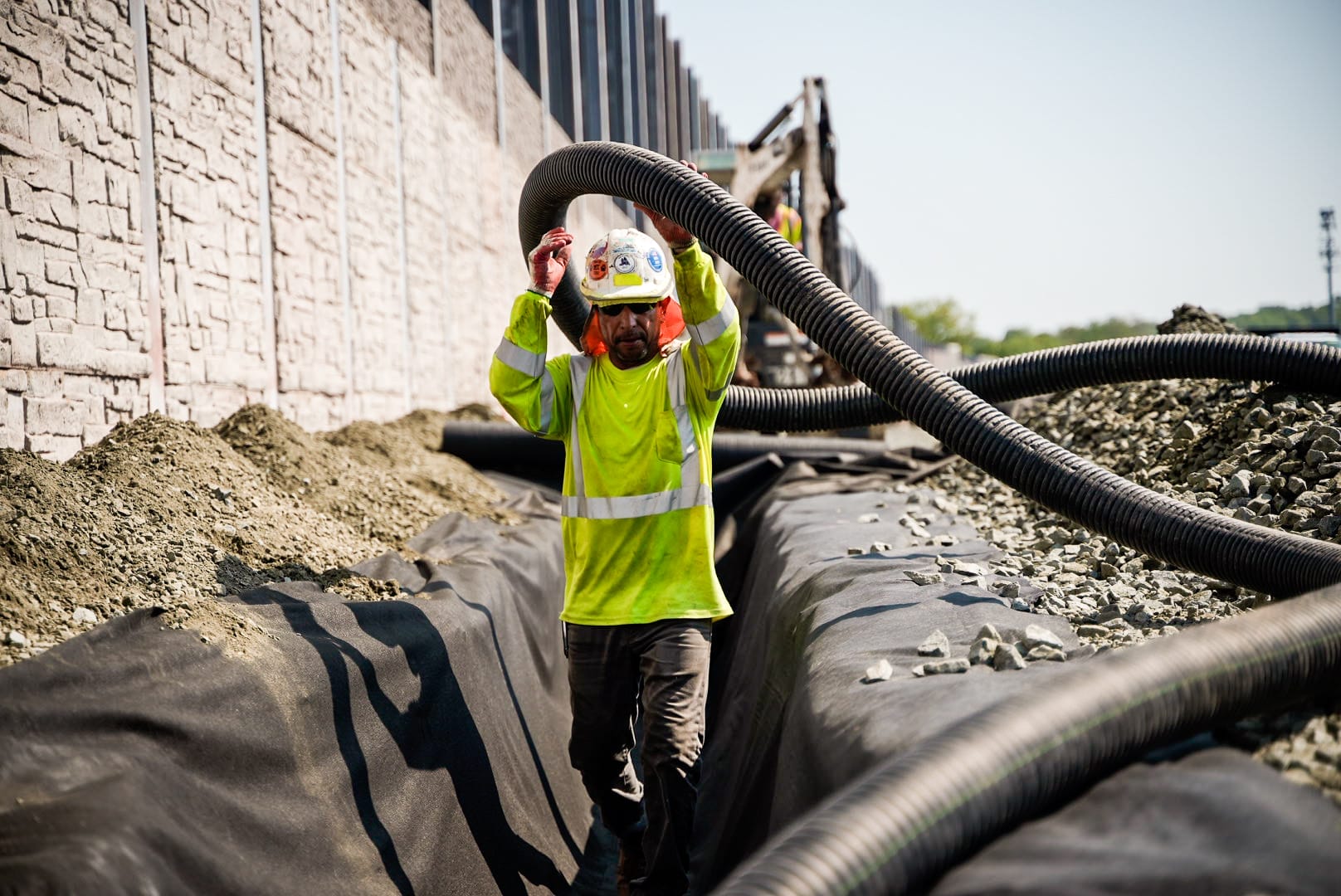Do you ever wonder why certain roadways always seem to be wet and require constant maintenance? The answer may lie in the use of underdrain or the lack thereof.
What is Underdrain?
Underdrain is designed for the purpose of collecting subsurface water before it is able to saturate the road ditch or the surface of the road. Underdrain intercepting groundwater and springs means they help with drying and stabilizing road ditches, the road base, and banks that otherwise would face being softened by seeps and springs.
Underdrain can also serve to cut down on the erosive surface flow within the road ditch and stop subsurface water from becoming mixed with surface runoff that can be laden with sediment. The underdrain collects clean water that can then be moved to an outlet location that is both stable and away from road surface drainage.
The Benefits of Underdrain
Installing underdrain during roadway construction has several benefits. Here are some of the advantages:
- Ease of installation: Underdrain is easy to install, requiring simple materials and limited labor.
- Cost-Effective: Constructed of perforated pipe, geotextile fabric, and stone, underdrain is inexpensive compared to other roadway drainage systems.
- Tried and Tested: Underdrain has been tried and tested, successfully lowering water volume and stabilizing ditches, banks, and road bases.
- Ecologically efficient: Underdrain is environmentally sound, separating clean spring water from dirty road runoff.
- Reduced Maintenance: Underdrain often reduces maintenance costs and time associated with wet roadsides.
Where is Underdrain Used?
There are a number of places in which underdrain can be installed. A good example is where springs or seeps are surfacing in the road or inside the ditch, or where road shoulders have become rutted, soft, or wet.
It is also a good idea to install underdrain in areas with standing water in road ditches or where springs and seeps have caused an active flow of water.
Underdrain can also be used if a cut bank has become unstable and often fails because of a saturated toe or bank springs, and in areas where road stability problems are being caused by subsurface water.
Types of Underdrain
There are various different types of underdrain. It is possible to purchase prefabricated conduits that are already ready to just put straight into position. These conduits normally encompass a perforated plastic pipe that has been wrapped in geotextile for the purpose of collecting and conveying water.
It is also possible to construct underdrain with the use of a clean washed stone that is also wrapped in geotextile fabric.
When used in tandem, washed stone, and perforated pipes can maximize flow capacity and water collection as part of a constructed underdrain.
Outlets
Wherever practical, separate outlets should be constructed for underdrain and road drainage, particularly if the underdrain is conveying spring water. The use of separate outlets means that clean spring water will not become mixed with storm drainage that can be full of sediment. Separate outlets also effectively reduce the concentrated flow volume of both outlets.
Considerations for Underdrain Construction
Materials are a factor that needs to be taken into consideration when installing underdrain. A perforated pipe is commonly a flexible pipe either 4 or 6 inches in diameter, the function of which is the collecting and conveying of underground water. There are other prefabricated underdrain shapes available for particular purposes, including trench drains.
Geotextile fabric is a vital part of an underdrain, with the fabric around constructed and prefabricated underdrain being designed for the prevention of clogging. The fabric means that water is able to pass through while providing a barrier to clay and fine silt that would otherwise eventually cause the underdrain to become clogged.
Clean stone needs to be used in constructed underdrain. This stone tends to contain no fine material and be of a uniform size, between two to four inches in diameter. Using larger stones would see the capacity of the underdrain increase.
Underdrain is designed to collect clean water from seeps and springs. Road surface drainage should not go into an underdrain as the sediment and debris in such runoff would cause the underdrain to become clogged and stop working.
It is important to remember that underdrain is intended to convey water. Underdrain, therefore, needs to be installed at a functional slope to make certain of correct drainage, so installation needs to be carried with a minimum of a 1% slope.
Underdrain needs to be buried to carry out its function. Their integrity is protected by a proper cover, which also stops the geotextile wrap from being damaged and guards pipes against traffic weight. There should be at least 12 inches of cover over the pipe and fabric.
Most roads actually underutilize underdrain despite the insurance being cheap in comparison to the long-term maintenance requirements of unstable roadways. Go to the Muller, Inc. website or call us today at 703-560-4040 to discuss underdrain installation.

